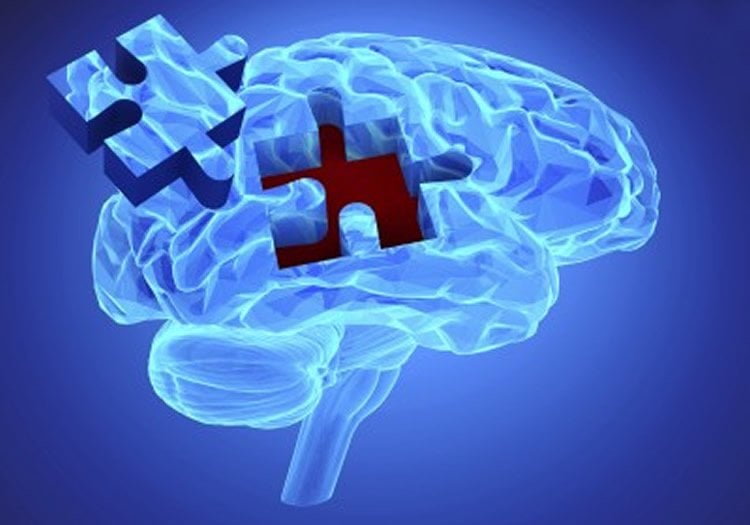A toxic protein called amyloid beta is thought to play a key role in the onset of Alzheimer’s disease. In healthy people, amyloid beta is degraded by enzymes as it forms. However, in patients with the disease, these enzymes appear unable to adequately perform their actions, causing the toxic protein to accumulate into plaque deposits, which many researchers consider leads to dementia.
One of the Holy Grails of the pharmaceutical industry has been to find a drug that stimulates these enzymes in people, particularly those who are in the early stages of dementia, when amyloid plaques are just starting to accumulate.
Monash researchers have discovered what could well be this elusive drug candidate– a molecule in snake venom that appears to activate the enzymes involved in breaking down the amyloid plaques in the brain that are the hallmark of Alzheimer’s disease. Dr Sanjaya Kuruppu and Professor Ian Smith from Monash University’s Biomedicine Discovery Institute have just published their research in Nature Scientific Reports.
Dr Kuruppu has spent most of his research life studying snake venoms, looking for drug candidates. When he began researching Alzheimer’s disease he says that “snake venom was an obvious place for me to start.”
He was looking for a molecule that would stimulate the enzymes to break down the amyloid plaques. What he found, when screening various snake venoms, was in fact one molecule with the ability to enhance the activity of two plaque degrading enzymes. This molecule was extracted from a venom of a pit viper found in South and Central America. Dr Kuruppu and his team have developed synthetic versions of this molecule. Initial tests done in the laboratory using human cells have shown it to have the same effects as the native version found in the snake venom.

Dr Kuruppu is one of the four researchers in Australia to receive funding from the National Foundation for Medical Research and Innovation to conduct further testing of this newly-identified molecule.
Source: Monash University
Image Credit: Image is adapted from the Monash University press release.
Original Research: Full open access research for “N-terminal domain of Bothrops asper Myotoxin II Enhances the Activity of Endothelin Converting Enzyme-1 and Neprilysin” by A. Ian Smith, Niwanthi W. Rajapakse, Oded Kleifeld, Bruno Lomonte, Nkumbu L. Sikanyika, Alexander J. Spicer, Wayne C. Hodgson, Paul J. Conroy, David H. Small, David M. Kaye, Helena C. Parkington, James C. Whisstock and Sanjaya Kuruppu in Scientific Reports. Published online March 2 2016 doi:10.1038/srep22413
Abstract
N-terminal domain of Bothrops asper Myotoxin II Enhances the Activity of Endothelin Converting Enzyme-1 and Neprilysin
Neprilysin (NEP) and endothelin converting enzyme-1 (ECE-1) are two enzymes that degrade amyloid beta in the brain. Currently there are no molecules to stimulate the activity of these enzymes. Here we report, the discovery and characterisation of a peptide referred to as K49-P1-20, from the venom of Bothrops asper which directly enhances the activity of both ECE-1 and NEP. This is evidenced by a 2- and 5-fold increase in the Vmax of ECE-1 and NEP respectively. The K49-P1-20 concentration required to achieve 50% of maximal stimulation (AC50) of ECE-1 and NEP was 1.92 ± 0.07 and 1.33 ± 0.12 μM respectively. Using BLITZ biolayer interferometry we have shown that K49-P1-20 interacts directly with each enzyme. Intrinsic fluorescence of the enzymes change in the presence of K49-P1-20 suggesting a change in conformation. ECE-1 mediated reduction in the level of endogenous soluble amyloid beta 42 in cerebrospinal fluid is significantly higher in the presence of K49-P1-20 (31 ± 4% of initial) compared with enzyme alone (11 ± 5% of initial; N = 8, P = 0.005, unpaired t-test). K49-P1-20 could be an excellent research tool to study mechanism(s) of enzyme stimulation, and a potential novel drug lead in the fight against Alzheimer’s disease.
“N-terminal domain of Bothrops asper Myotoxin II Enhances the Activity of Endothelin Converting Enzyme-1 and Neprilysin” by A. Ian Smith, Niwanthi W. Rajapakse, Oded Kleifeld, Bruno Lomonte, Nkumbu L. Sikanyika, Alexander J. Spicer, Wayne C. Hodgson, Paul J. Conroy, David H. Small, David M. Kaye, Helena C. Parkington, James C. Whisstock and Sanjaya Kuruppu in Scientific Reports. Published online March 2 2016 doi:10.1038/srep22413






